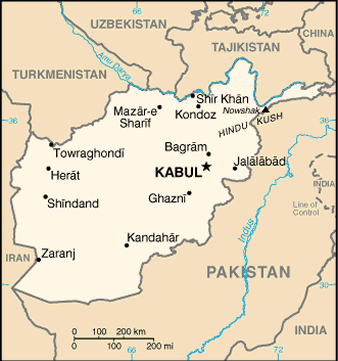
Tselogs Tapas Cafe
6055 Mission Street
Daly City, CA 94014
http://www.tselogs.com/Tselogs/Home.html
Filipino cuisine was an interesting one. It was our first real trek outside the city into one of the more scenic neighborhoods in Daly City - you know the pretty dead at 8pm "not-sure if my car will be there when I leave the restaurant" kinda blocks. Before we talk about the restaurant and the food let's learn a little bit more about the Philippines and Filipino cuisine. The Philippines is the world's 12th largest country with a population of over 91 million people spread throughout the country's more than 7,100 islands. The cuisine of the Philippines is fairly standard Southeast Asian grub with a little Spanish flair. Spain ruled the Philippines all throughout the colonial period pretty much from Ferdinand Magellan's arrival in 1521 to the end of Spanish rule in 1898. The Spaniards' influence to the Philippines extended beyond the introduction of exotic spices and artifacts, the Spanish language, and Christianity. Spanish rule brought with it tomatoes, garlic, chili peppers, modern oil/onion sauteing techniques, marinading techniques like adobe, as well as Spanish staple foods such as Paellas and flan. Although historians agree that more than 75% of Filipino cuisine came from Spain, other cultures, like Arab, Indian, Chinese, Japanese, and even American, had their influence on Filipino culture and food.

Filipino cuisine might as well be a synonym for Pork. I'm not exactly sure how many pigs were slaughtered for the benefit of feeding our party that night, but everything from the egg rolls to the seafood noodles had pork in it. For non-pork eaters, the options were definitely thin at the restaurant, but there were a few things to choose from which we'll discuss later on.
If you look at the menu at Tselogs, you'll notice a common theme. Every dish ends with the suffix "silog". Now what in the heck is silog you might ask. Well silog comes from the combination of two words "sinangag", which I guess is Filipino for fried rice and "itlog" which is the word for fried egg. When these two foods are combined into one meal, it becomes kosher to call it a "silog". The word you add before "silog" is essentially the main component of the dish you're eating. Spamsilog, for instance, is spam, fried rice, and eggs, while Bacsilog is short for bacon, fried rice, and eggs. Silogs are apparently very popular during breakfast time, which is why Tselogs is a trendy breakfast spot. Although the food served at Tselog's is breakfast oriented and the restaurant name has "tapas" in it, don't be fooled. The food is extremely hearty (think Filipino style comfort food) and the portion sizes by no means resemble tapas - the portions were ginormous.
As we sat down and were handed the cheap xeroxed menus, a number of us were disappointed that various items from Tselogs' catering menu did not work their way into the "tapas" menu. Yes, there were a few of us (only a few of us) avidly looking forward to tasting "Dinuguan" (which to me sounds like Dinosaur dung). Dinuguan, as eloquently described by Wikipedia, is a "Filipino savory stew of blood and meat simmered in a rich, spicy gravy of pig blood, garlic, chili, and vinegar." As Rachel Ray would say "delish" or my favorite "yum-o". Unfortunately, we weren't graced with this dish that evening. Another disappointment was that Tselogs was out of the delectable gelatinous canned meat, Spam! Spam is apparentely a big part of the Filipino breakfast experience.
 Yum, visit the Spam website
Yum, visit the Spam websiteNext up were entrees or as we jokingly called it "the logs". Per the waitresses' recommendation, we ordered our dishes ala carte instead of ordering the silogs with the rice & egg compliment. The ala carte logs were pretty cheap (about $5 per dish) so we decided to order a variety of dishes to sample (we later found out that the amount of food we ordered could probably feed a small village in the Philippines). As we sifted through the 10 or so logs on the menu, we noticed that close to all had some kind of pork in it. Even one of their shrimp and noodle silogs had Chinese sausage (a.k.a. pig) in it. The non-pork eaters at the table ordered the sisigsilog (chicken sisag), bangsilog (fried milk fish), a few orders of the garlic fried rice (burnt garlic bits at the top looked like bacon bits), and the palabok (Filipino noodles) kicked up a notch with extra vegetables. If you thought the non-pork eaters were screwed, this is definitely not a restaurant I'd recommend for vegetarians. One of our brave vegetarian dinner club member had to settle for either the garlic fried rice or the noodles. Other dishes ordered that evening included the shrimp silog mentioned earlier and the embutidosilog (Filipino meatloaf).
Out of all of the dishes we ordered, the best dish of the night was by far the chicken sisag. Chicken sisag is essentially minced chicken fried and sauteed in garlic, onion, soy sauce, and lemon served atop a sizzling hot plate (the meat was in fact sizzling, kinda like the fancy steak fajitas you get at a Mexican restaurant). Chicken sisag is definitely something we'd order again and would recommend it highly to anyone who comes here or to any other Filipino restaurant. The vegetarian noodles had to be second on the good stuff list for the night. The noodles were decently flavored, spiced, and salted. There wasn't really anything special about the noodles (no fancy secret sauce, etc... ). The noodles were good enough that the table went through the entire plate we ordered. We unfortunately can't say the same for a few of the other dishes.
The rest of the dishes we ordered that evening were well, "interesting". The shrimpsilog (or whatever it was called) was shrimp and Chinese sausage tossed in noodles served with one of the most fluorescent, neon yellow sauces I've ever seen. If the lights went out at Tselogs, I swear we would have been ok with this dish as our light source. Aside from the strange color, the dish was "goopy" for lack of a better term. For the longest time, we thought one of the main ingredients in this dish was raw egg yolks, but the waitress had insisted that eggs had no business in the dish. To this day, the bright yellow sauce remains a mystery (i don't think we want to know what was in there). One brave soul ended up taking the dish home as "leftovers", but only because he felt bad that the table managed only a few bites of the dish. He felt empathy for the waitress who clearly looked disappointed. It did not help that we had answered her question on whether we wanted anything boxed with the response, "yes, everything but that one".
Next on the strange food category was the mystery meatloaf (embutidosilog). The meatloaf looked like holiday cake with its multi-colored stuffing - imagine eating raisin bread where the raisons were each a different color. I don't think too many people gobbled this one down (I certaintly didn't as this was one of the pork dishes). Most of us were wondering whether these colored raisons were fruit, jellybeans, or M&Ms. Nothing screams appetizing like pale-colored mystery meat with Christmas lights for filler. The last dish we had that night was the fried whole fish (bangsilog). Nothing really special or unique about this one. The fish was edible, but most of us thought the fish was dry, meatless, and a little fishy in both smell and taste.
All in all, Tselogs was a big disappointment and our worst dinner club experience to date. The chicken sisag is really what saved the dinner that night. Who knows maybe it was an off night, the main chef was out sick, or maybe Tselogs is just a better place for breakfast. We've heard Filipino food is good, but we didn't get it that night for sure. A lot of people do rave that Tselogs is the best restaurant for Filipino food in the city. There have been countless positive reviews online, including some on Yelp. There has even been a Filipino cuisine focused show that highlights Filipino cuisine and uses Tselogs' as an example (see Youtube video here - the lady in the video describing the food was actually our waitress that night). Anyways, our journey from Ethiopia to Filipino may have ended in tragedy, but we're hoping our stay in Germany for "G" will be better. Until next time.
































 Helmand Palace
Helmand Palace


